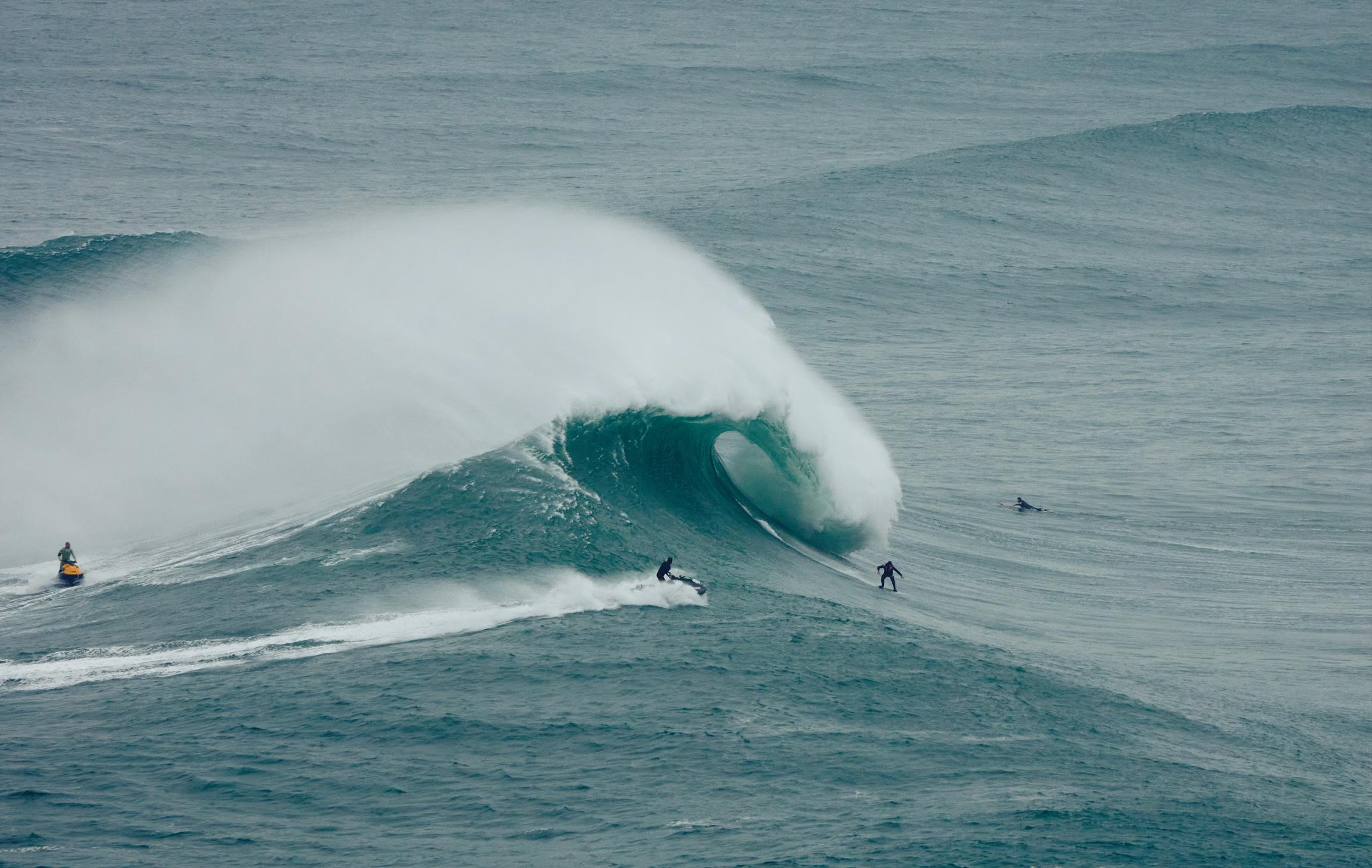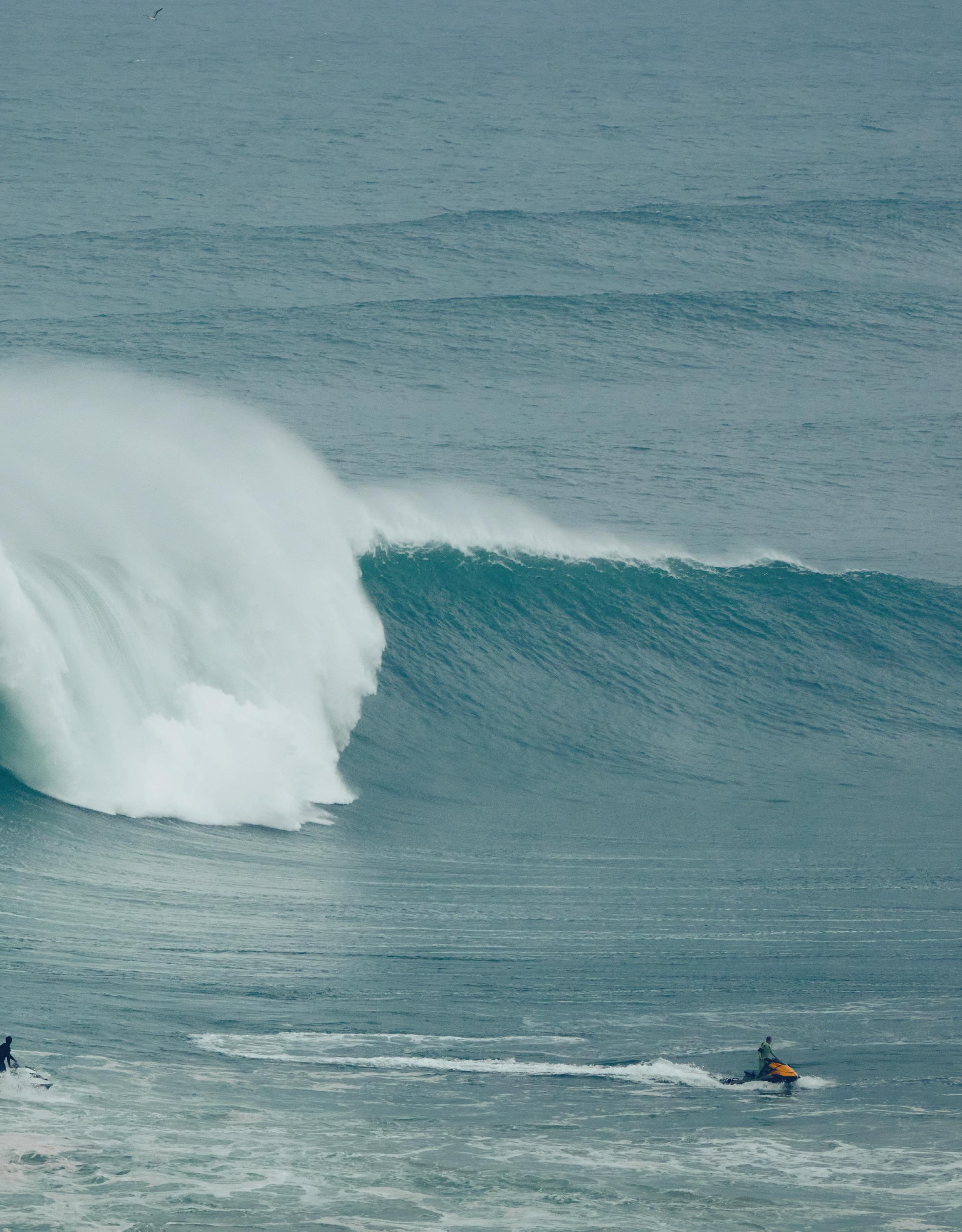
6 minute read
Let the good times roll
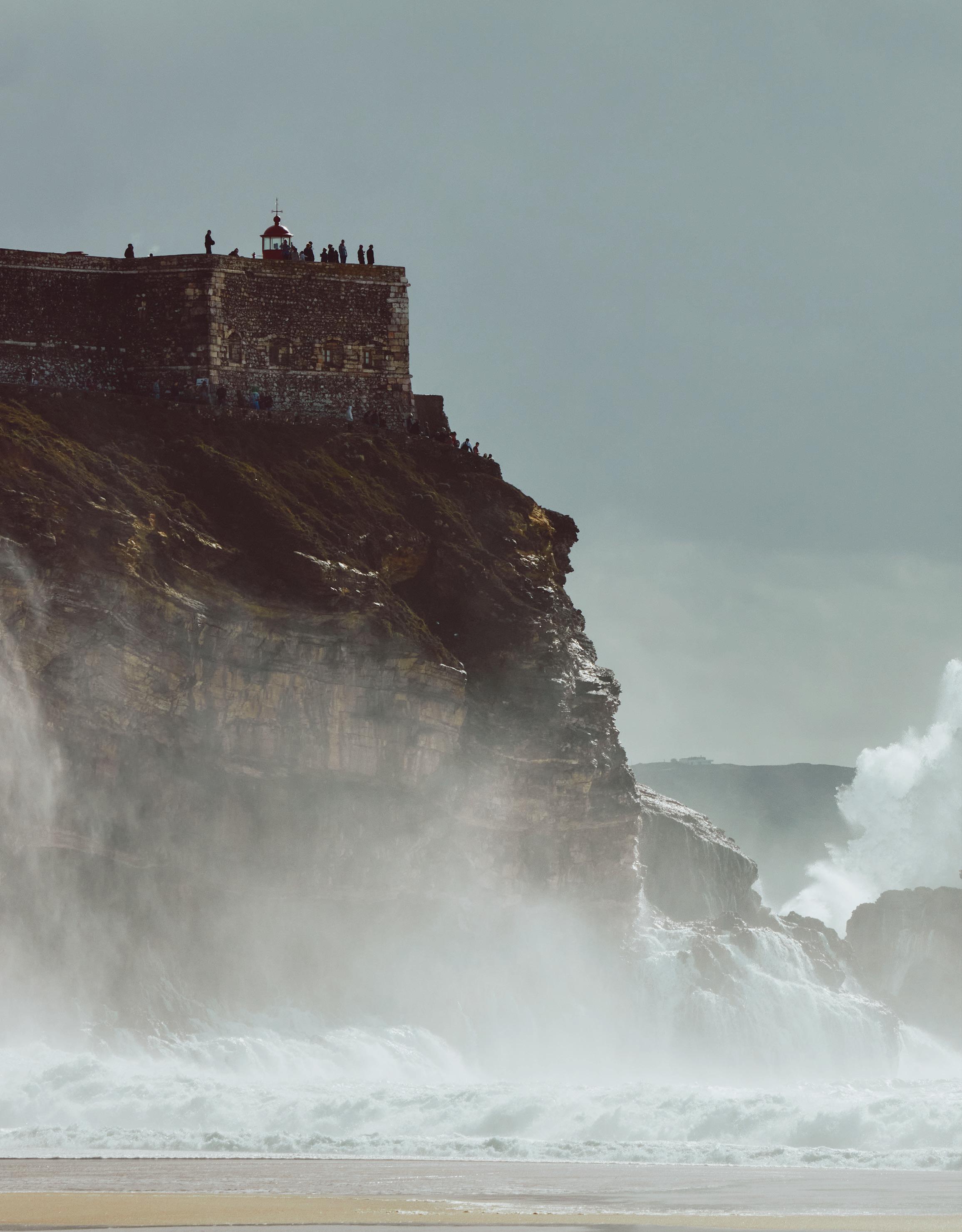
Let the good times
roll

Praia do Norte in Nazaré, Portugal, is home to the biggest surfable waves on the planet. In 2017, Brazilian professional big-wave surfer Rodrigo Koxa became a Guinness World Record holder when he rode an 80-foot Nazaré wave, the biggest ever surfed in the world. And the waves just keep on rolling. The once small-time fishing village is now the epicenter of surf, and Portuguese UK-based sports and lifestyle photographer, Andre Silva, captures it all on camera. He’s shot for Adidas, Audi and Toyota, and his work has appeared in Gestalten. He regularly photographs professional sportspeople, from rugby players Elliot Daly and Owen Farrell to footballers Julian Draxler and Jamie Vardy. When he’s not hot on the heels of Nazaré surfers, he’s shooting fishermen in the Arctic. Interview Julia Zaltzman Photography Andre Silva

Previous page: Sometimes the biggest waves break close to the cliff and surfers can get dragged into the rocks, which is the worst place you can find yourself. Australian big-wave legend Ross Clarke-Jones was once bounced around here by waves for 15 minutes, before managing to climb up the rocks to safety This page: View from the beach, where you can really see the power and above all the frequency of the waves. It’s relentless


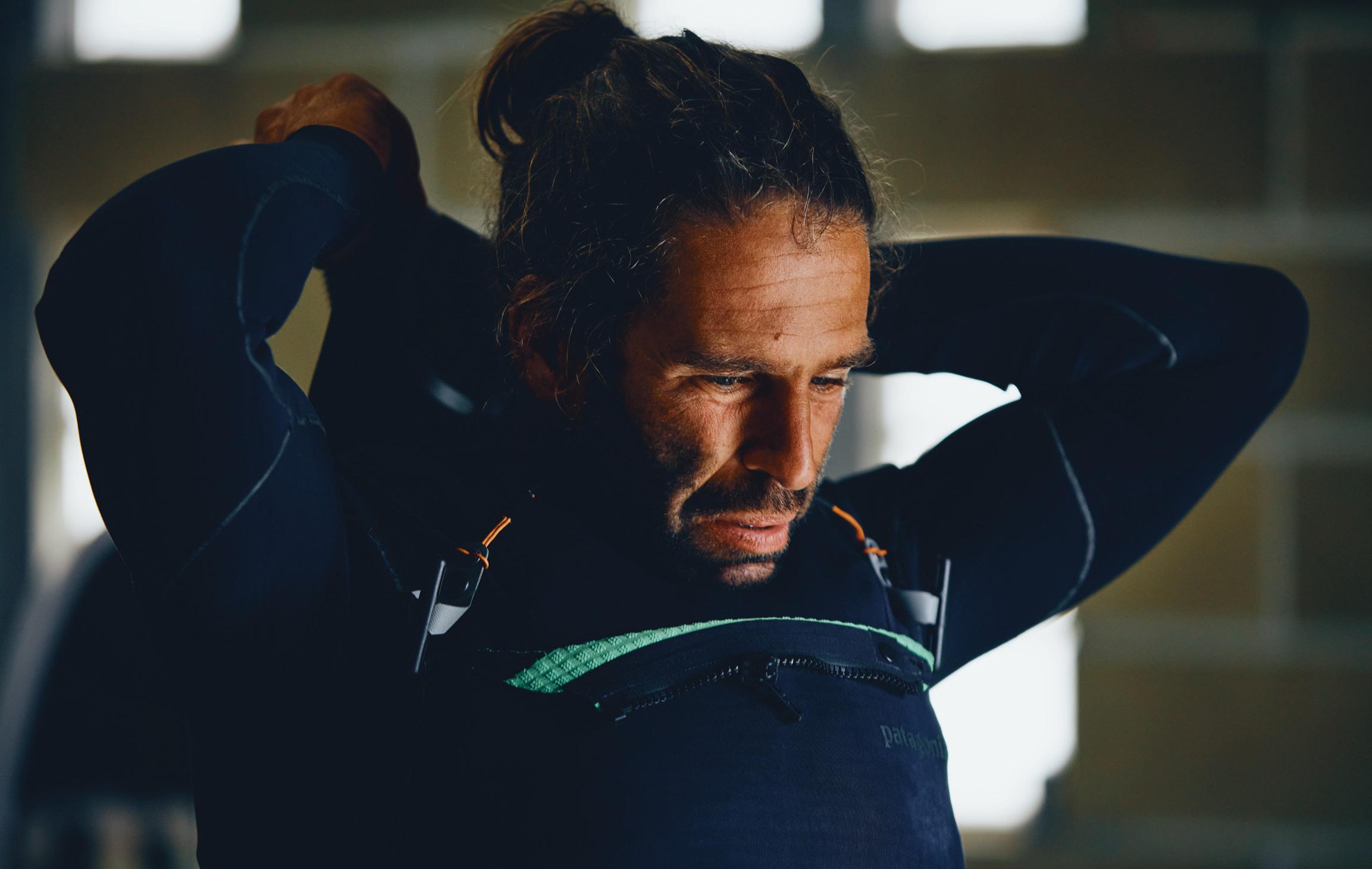
Portuguese big-wave surfer Hugo Vau (above) and Californian big-wave surfer Eric Akiskalian (left) getting prepared for another session. Some surfers start controlling their breathing early in the day to prevent themselves from hyperventilating and feeling anxious
Next page: The dreaded inside where smaller but extremely powerful waves break continuously. Jet ski drivers have to find the gaps in these ever changing conditions to safely reach the outside THE NAZARÉ WAVES ARE INSANE – WHAT EMOTION BEST SUMS UP BEING THERE IN PERSON? When I think of Nazaré, I think of respect. I have a lot of respect for the sea in general, but Nazaré is a beast. From up on the hill by the lighthouse looking down, you can see the waves form and the different routes you can take to avoid them. It’s easy to think, “that looks pretty mellow and reasonably safe” only to then go down to the beach and see walls of whitewater, relentlessly breaking one after the other. When you see that much water moving around, it’s a humbling experience. The waves are beautiful and menacing, consistently reaching around 16 feet or more.
HOW DID THE NAZARÉ PHOTOSHOOT HAPPEN? I’m originally from Coimbra, a city about an hour and a half from Nazaré. I’m friends with some of the brave surfers that take on these waves, so I was able to document the whole process. They’re pretty special athletes, physically strong but also mentally prepared to face waves of that size. They have specific skills, from breath-hold training, driving jet skis in huge surf, being able to read the charts and forecasts, to the actual physical training and elite-level surfing. They also develop equipment in the process, such as heavier surfboards dedicated to tow-surfing (towed by jet skis), and floatation vests inflated by CO2 canisters that bring them back to the surface! It’s incredible.

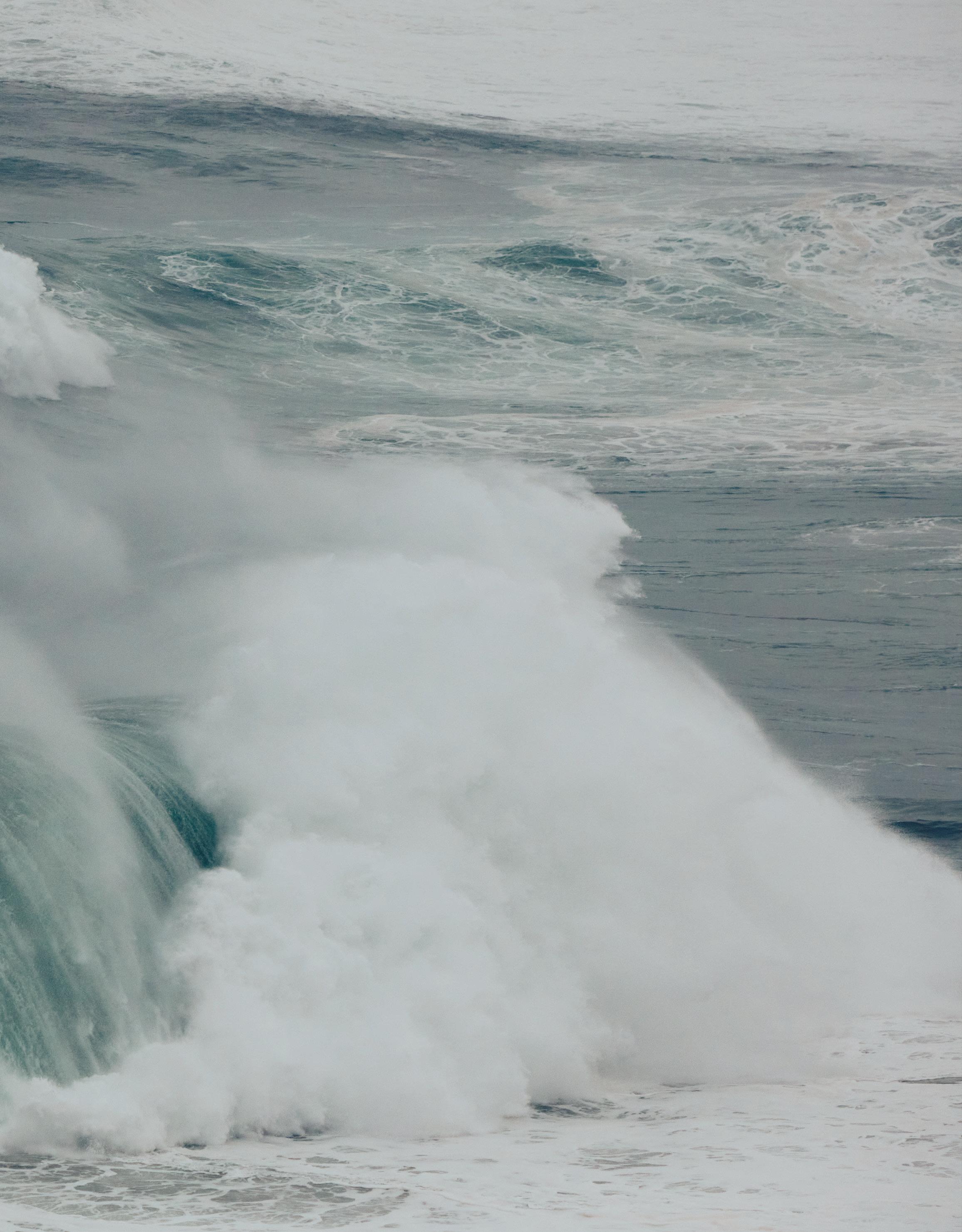

DO YOU GET OUT ON THE WATER WHEN PHOTOGRAPHING BIG WAVE ACTION? I don’t surf. But I have been bodyboarding since I was a kid, which has helped me understand the sea and how to go under the waves. I’m also accustomed to wearing swim fins, which are necessary to shoot surfing from the water. I have been out in big seas, mainly swimming with the camera, and sometimes on the back of jet skis too, but not in huge Nazaré days. I’ve thought about it…and made the conscious decision not to risk it. Even with jet skis you must be prepared to swim back to safety, as the skis often get rolled over by the waves. It’s carnage.
WHAT IS YOUR FAVORITE SUBJECT MATTER TO SHOOT? Ultimately it’s light, in its many forms. The way it affects portraits, sports, boats in rough seas, anything. Even if you’re shooting underwater, light has a huge influence on the outcome. You need a fast shutter speed to produce a well-exposed image (for action I shoot at 1/1000s or faster). The higher the ISO value the more sensitive to light it is, but also the more grain it adds to the image. Light plays such an important role in photography, and sometimes less is more. A perfectly lit image can look flat, but shadows can add a lot of drama.
Above: British big-wave surfer Andrew Cotton in the zone. ‘Cotty’ has been spending winters in Nazaré for years. In 2011, he was one of the first to surf with Garrett McNamara, towing him into the biggest wave ever surfed (at the time). In 2014, it was Cotty’s turn to ride a record-breaking wave in Nazaré. Three years later, Cotty was caught by a huge wave that landed almost on top of him launching him more than 10 feet into the air. The highspeed impact of hitting the water fractured his spine. After months of physio and training he was back surfing big waves
Opposite: Hawaiian big-wave surfer Kohl Christensen, who co-founded the Big Wave Risk Assessment Group (BWRAG) after the tragic drowning of Sion Milosky. BWRAG focuses on risk management, apnea training and first responder training
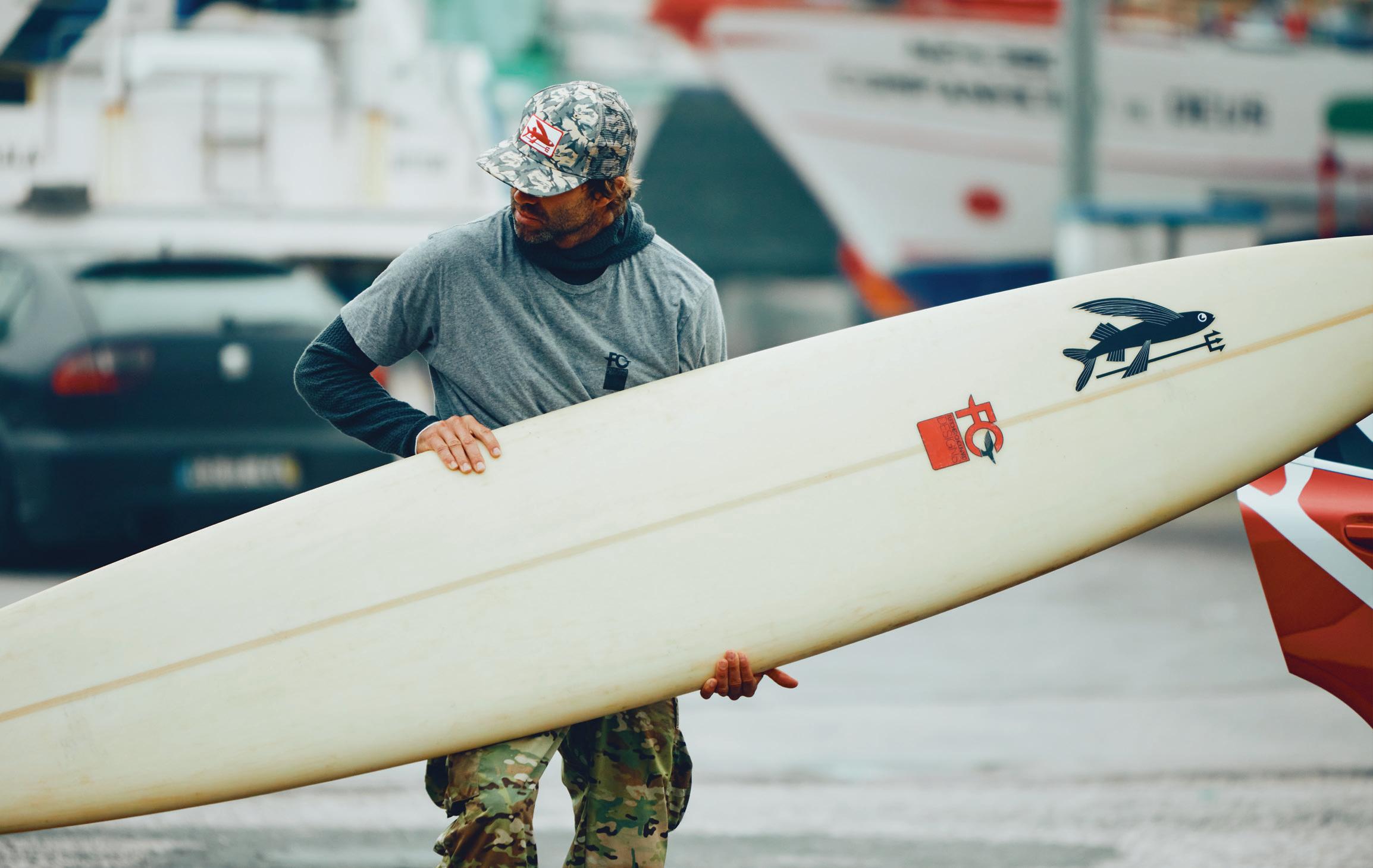
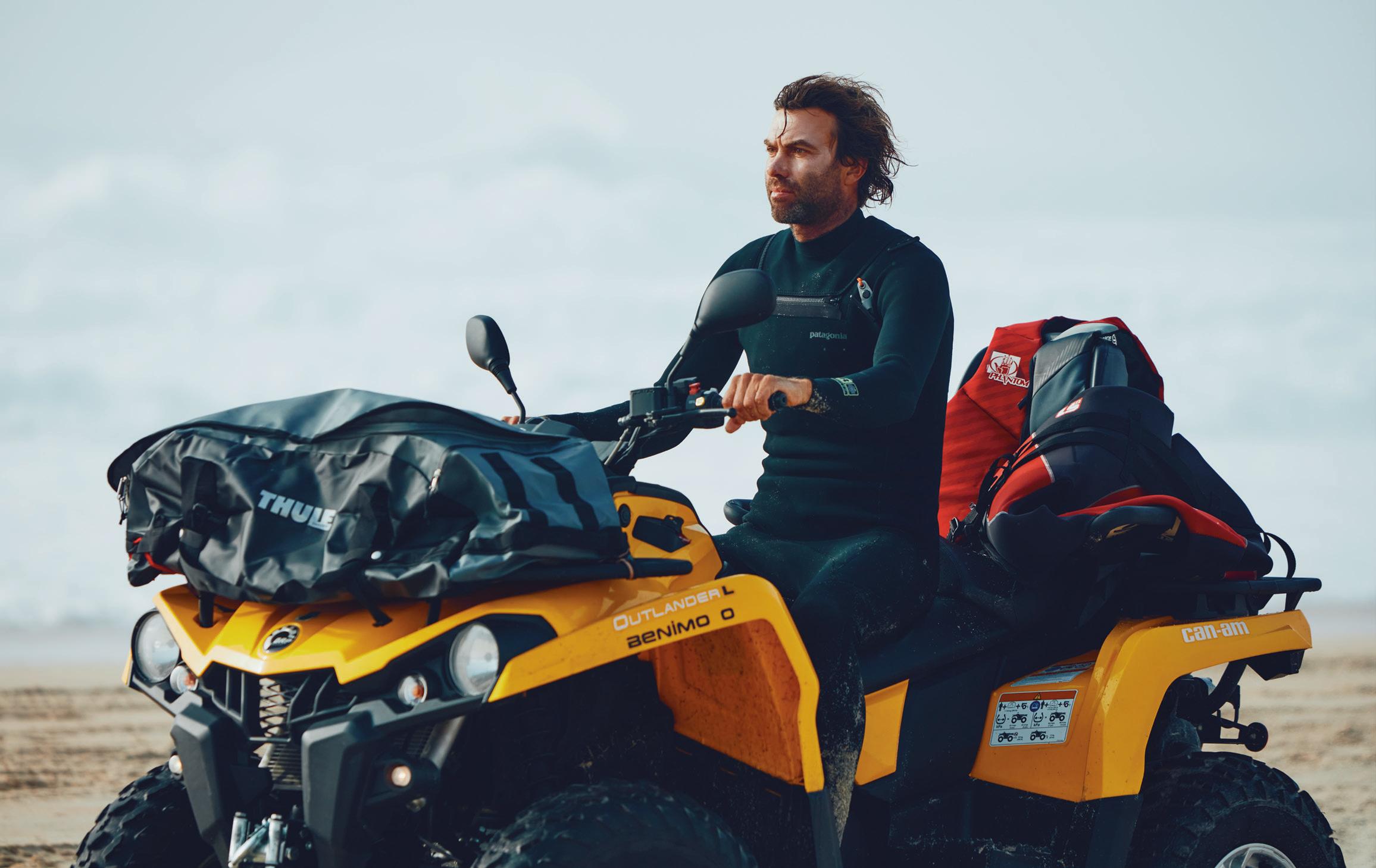

Hawaiian big-wave surfer Aaron Gold, who had a close call in Fiji in 2016 after being held under water by two big waves and received CPR whilst still on the boat heading to hospital
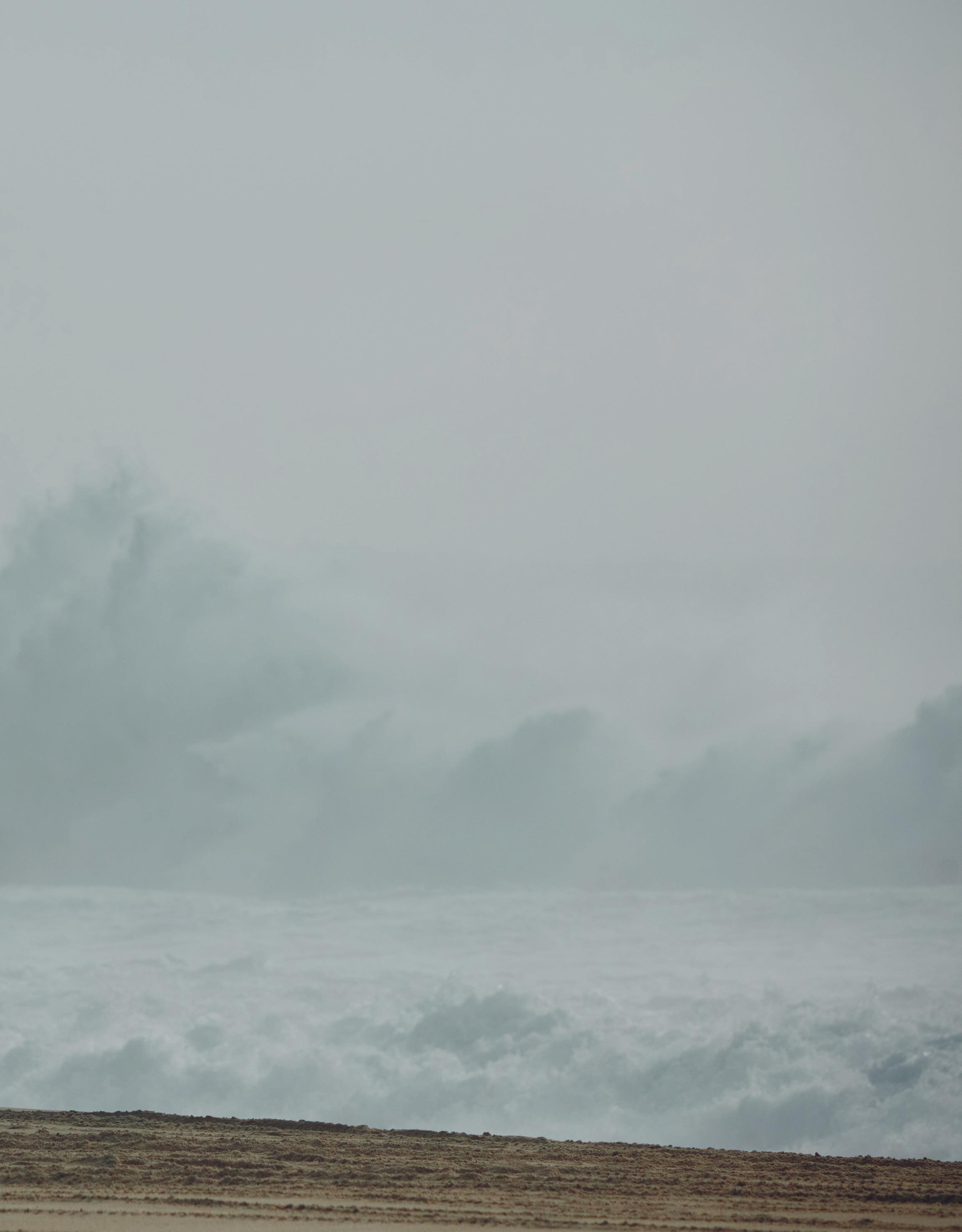
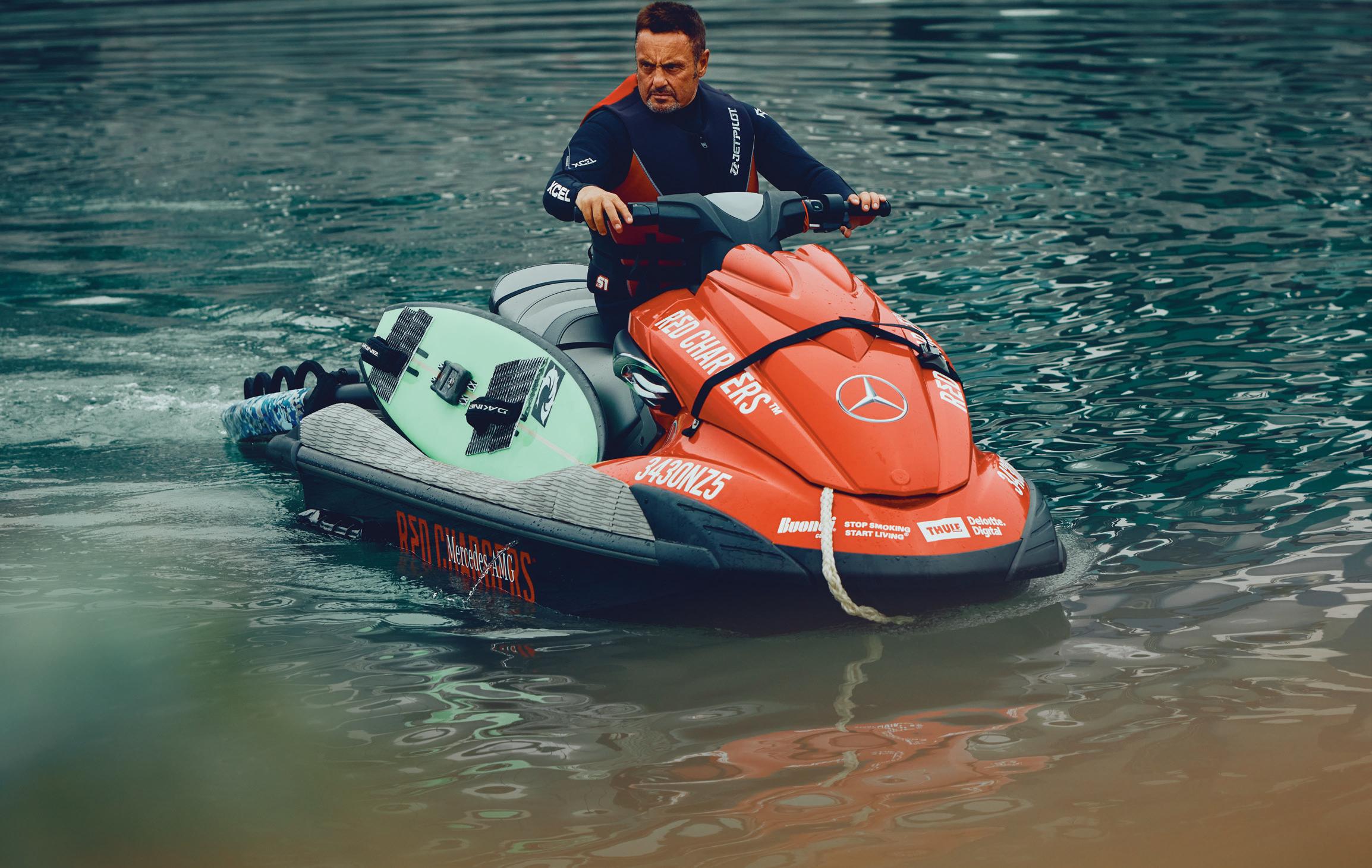
WHERE IS YOUR HAPPY PLACE? Having a nice cuppa watching the sun set over the sea somewhere on the west coast of Scotland, with my girlfriend. And if I’m lucky, with a stomach full of seafood! I recommend the Seafood Shack in Ullapool, the haddock wrap is out of this world, as are the langoustines.
MOST TERRIFYING MOMENT BEHIND THE LENS? It’s never fun to realize you’ve been caught inside a big wave undergoing a violent underwater spin cycle, especially when you’re already out of breath and holding a heavy camera. It doesn’t usually last too long, but it can feel like an eternity, so you have to calm yourself down and try to enjoy the ride.
WHERE IS THE NEXT DESTINATION ON YOUR PHOTOGRAPHY BUCKET LIST? I really want to go back to Lofoten in northern Norway, and the Azores in the Atlantic. I would also love to spend a few months traveling around the Pacific Ocean – Hawaii, Tahiti, Fiji, Tonga – and the Pacific northwest; the scenery looks beautiful in that part of the world.
Above: Hugo Vau in the shallows on a jet ski
Opposite top: A jet ski driver looking for an opening in the waves to reach the outside
Opppsite bottom and following page: A cliff view of the big righthanders. And some people say that Nazareés waves don’t tube?…
Last page: A surfer getting picked up by a jet ski after riding a wave, while a second safety jet ski keeps a close watch in case they require further assistance

